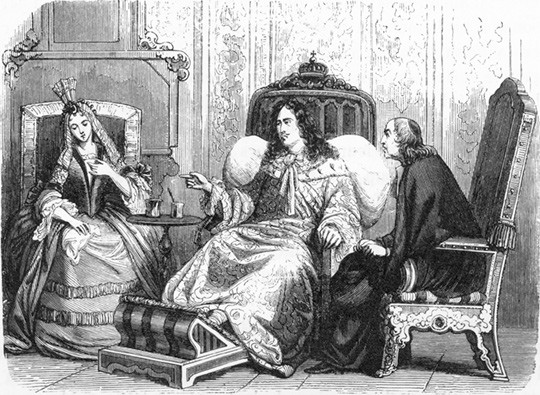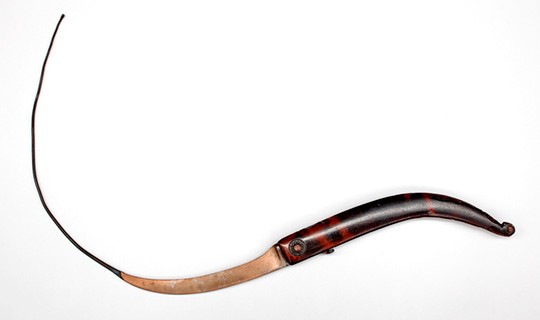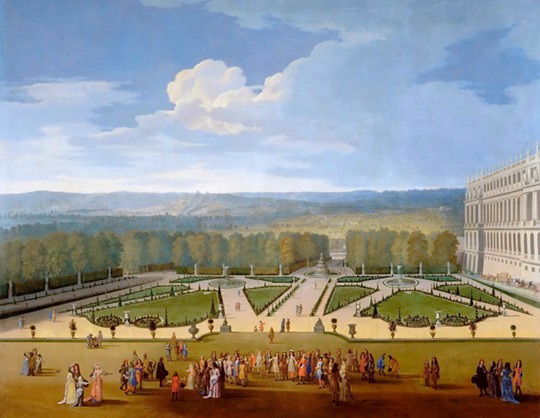In 1686, Louis XIV of France (1638 – 1715) – The Sun King – developed a perianal abscess that after a series of failed treatment attempts, including with the use of a red-hot iron, developed into an anal fistula. The doctors were powerless, and after several months of cogitation the king underwent surgery that proved successful. At the time, surgeons were subordinate to physicians, but with the king’s help their working conditions improved and their prestige rose. After persistent efforts by later outstanding French surgeons and with royal support, the Académie Royale de Chirurgie (the Royal Academy of Surgery) was established in 1731. Medical training in France was later reorganised, with the establishment of institutions that merged training in internal medicine and surgery.
The article Medisinens kirurgisering og etableringen av en norsk legeskole i 1814 [The «surgicalisation» of medicine and the establishment of a Norwegian medical school in 1814] by Per Haave, published in the Journal of the Norwegian Medical Association in 2009 (1), highlights the French surgery reform as a role model for Denmark-Norway. We might then well ask how French surgeons came to assume the role of pioneers.
From the late 17th century, Paris was regarded as the foremost centre of anatomy and surgery (2). This was not least due to the fact that the city’s surgeons had the opportunity to perform major operations, had access to new instruments and possessed excellent anatomical skills based on dissection of a large number of cadavers (2).
But Louis XIV too, with his personal need for surgical help and courage to undergo hazardous surgical procedures, must be given a great deal of the credit for making Paris and France pioneers in this field. He provided French surgery with sufficient support to let it emerge from beneath the shadow of the physicians and thus establish itself as a serious, independent discipline.
The anal fistula
In the winter of 1686, Louis developed a tumour in the crotch area. It was described in detail by his personal physician Antoine Daquin (1629 – 1696): «On 15 January, His Majesty complained of a small lump in his crotch, two fingerbreadths in front of the anus, which was not painful to the touch, with no redness or throbbing» (3).
Most likely, the lump was caused by an inflammation of one of the glands in this area. Glandular inflammation was apparently common in the 17th century (4). The king’s physicians started their treatment with various kinds of compresses, including sugar compresses. When a perianal abscess developed, it was punctured to let the pus flow out. In some way, it proved possible to dry out the wound applying compresses soaked in extracts from various leaves as well as from roses cooked in red wine (Burgundy). The doctors also succeeded in filling the cavity that had formed by injecting various substances, a process that caused the king great pain.
His Majesty became increasingly irate over the abscess which continued to leak pus, forcing him to change clothes two or three times every day after dinner (5). His afflictions continued over many months. The pain was pronounced, but every time he felt better, the doctors continued their treatment sessions consisting of enemas and laxatives, which only served to aggravate the misery (5). After four months, the formation of a fistula was suspected. Most likely, the constant treatments with a red-hot iron had helped increase the size of the crater.
After having struggled with pain and other discomfort for many months, the king realised that the physicians were powerless. He decided to undergo surgery. In the meanwhile he isolated himself in his private Versailles apartments, sullen and cantankerous. Even the court saw very little of him. He had to abandon riding, and every time he was seen out in the gardens he was sitting in a sedan chair.
The prelude to the operation
No surgeon dared lay hands on the Sun King without prior practice. The great operation was planned in detail and in complete secrecy. Only the war minister Louvois (1641 – 91), Louis XIV’s new secret wife Madame de Maintenon (1635 – 1719), his confessor Père La Chaise (François de La Chaise (1624 – 1709)) after whom the famous cemetery in Paris is named, and the king’s doctors were privy to the plans (Figure 1). The Dauphin was not informed.

Figure 1 Spouse Mme de Maintenon and confessor Père La Chaise with the tormented Louis XIV. Woodcut. Illustration: AKG Images/scanpix
The identity of the guinea pigs has remained unclear, but patients from hospitals in the town of Versailles have been mentioned (6). Historians have unsuccessfully attempted to find out how they fared – or more correctly, how many of them died – but to no avail. It was rumoured that the deceased were buried at sunrise and with no tolling of church bells, to prevent anybody from getting wind of what had happened. One patient is thought to have survived (4).
Charles-François Félix (junior) (1635 – 1703), the king’s chief surgeon, had not performed this kind of surgery before, but gained first-class experience over the months he was permitted to experiment. He was especially concerned with finding the correct type of instrument. He gradually developed the instrument that was used on the Sun King, called «le bistouri royal» (the royal probe). This was a long, curved silver probe, now on display in the medical history museum in the rue de l’École de Medécine (Medical School Street) in Paris (Figure 2).

Figure 2 This instrument – a scalpel with royal curvature – was developed for operating on Louis XIV. Photo: Musée d’Histoire de la Médecine, Paris
The operation
On the day before the operation, the king inspected his gardens (Figure 3), monitored the ongoing works, ate his evening meal with his family, and after another round of excruciating pain made the final decision to undergo surgery the next day. On 18 November 1686 at seven a.m., His Majesty was accompanied into «le salon de Bassans» as it was known before the reconstruction in 1701 – today it is equivalent to «le salon de l‘Oeil de Boeuf» (the Bull’s Eye salon), the antechamber of the king’s bedroom.

Figure 3 Louis XIV and his court taking a stroll through the park at Versailles. From Musée de l’Histoire de France, Château de Versailles. Illustration: Heritage/scanpix
The parties involved were already in place. His doctor, chief physician Antoine Daquin and his successor Guy Crescent Fagon (1638 – 1718), chief surgeon Félix as well as four apothecaries had arrived at five in the morning through different doors, so as not to arouse suspicion. The king had been administered a pre-operative enema. He appeared to have his nerves under control and took a great interest in the various instruments that were to be used.
He was then placed on a bed with his face towards the window. A pillow was placed under his stomach while his thighs were spread and held up by two apothecaries. Towards the end of the operation he asked: «Is it over, gentlemen? Finish. Do not treat me like a king, I want to recover as though I were a peasant» (4).
Although this was to become the most famous surgical operation of the 17th century, it was not granted more than one sentence, admittedly running to half a page, in the king’s health records (3). Daquin, with his condescending attitude to surgeons, would most likely have preferred not to mention this episode at all. He made sure to add that a blood-letting was also performed.
That Félix, the operating surgeon himself, felt the need to write a more detailed description of this spectacular operation is more understandable. On the following day he wrote a full 18 pages. The whereabouts of this document in subsequent years is unknown, but in 2007 the papers resurfaced and were put up for auction with an asking price of EUR 4000 (7). Given the present interest in objects with a connection to royalty, the final price is likely to have been far higher.
The three-hour long operation was performed without any form of anaesthetic. Louvois, the war minister, held the patient’s hand during the entire procedure, while Mme de Maintenon stood next to the fireplace. The king is said not to have complained of any pain, but on two occasions he is reported to have exclaimed «Mon Dieu». The pain must have been excruciating, but Louis needed to keep a brave face for the sake of his own and the nation’s dignity.
And not only did the king survive – the operation must be called a success, because he was cured. Admittedly, he needed two repeat surgeries, but he was quite naturally very relieved and happy after the first major operation. At ten o’clock the news had spread through the palace and the king himself held council from his bed, «singing all day and in surprisingly good spirits» (4). He was back on his feet no more than two days later.
A brave king
Louis XIV showed great courage in letting himself undergo surgery. To be sure, he was cornered – he really had no choice, either politically or personally. In 1686 France was in a difficult position, isolated and resented, and facing an alliance of the majority of European countries (the League of Augsburg) (8).
A surgical intervention was the last resort, and the decision was not taken until months of other unsuccessful treatments had been attempted. For Louis, whom we know was anxious of smaller surgical procedures, such as bloodletting (3, 4), this must have been a difficult decision. He must be deemed to have shown great courage to undergo such an extensive and potentially dangerous operation (risk of bleeding) with no anaesthetic.
Consequences of the operation
The fistula operation had a number of consequences. The surgeon’s efforts were rewarded with a noble title, a palace and great wealth (9). To all those who suffered from a fistula, the operation brought hope of a cure, and like everything else that the Sun King undertook, this also became fashionable in Versailles. The courtiers lined up to have the same procedure done, whether or not they had a fistula. Those with no fistula were turned away by the surgeons (9).
Like the Sun King, the surgeon also deserves to be termed courageous. The consequences of a failed operation, not to mention the death of the monarch, would certainly have been less pleasant. This joint display of heroism and courage caused French surgical medicine to flourish. Rumours of the successful operation spread throughout Europe, and people flocked to France to be operated on by the skilful French surgeons. From being virtually unnoticed in the shadow of the physicians and dominated and scorned by them, the surgeons stole the limelight in a way never before seen.
On several occasions, not only during the operation of the anal fistula in 1686, the Sun King’s surgeons had come to his aid. He had to reposition an arm after a riding accident in 1683. Surgical assistance also became necessary later because of an abscess on the back of his neck. It was provided by his deputy chief surgeon Georges Mareschal (1658 – 1736), who took over this position in 1703 and was later appointed chief surgeon to Louis XV. Georges Mareschal was known all over Europe for his skills in operating on bladder stones (10).
The death of Louis XIV in 1715 was caused by a major medical blunder – the physicians opposed a surgical intervention and mistook an incipient gangrene for sciatica. The king begged his surgeons to amputate, but received this sad message at a stage when this was already too late: «Sire, we can remove your leg, but we cannot save your life» (11). In extreme pain, Louis stated: «I have never felt such intense pain, but what troubles me most, is that neither my physicians, nor my surgeons have found a way to relieve my pain for even a single day» (10, 11). The king’s death led to greater esteem for the surgeons, since it was understood that they might have been able to save his life had they been permitted to amputate at an early stage of the process (2).
The development of French surgery
Using his power and influence, the Sun King restored the independence of surgical medicine. For example, in 1671 he ensured that a teaching position in surgery was established at Le Jardin du Roi (the King’s Garden), now the Jardin des Plantes, to improve the training of surgeons. He often had to intervene in quarrels between the powerful faculty of medicine in Paris and his own doctors.
Being the chief royal surgeon meant holding the supreme surgical position in the country (12). The Paris medical faculty had always remained critical of the king’s doctors, and disapproved of the reputation that the surgeons gradually gained at the court (2, 9). Headed by the dean, they even physically attacked them (9). The medical faculty in Paris had a reputation for being reactionary and opposed the new ideas of the Enlightenment (2).
After the death of Louis XIV, the three subsequent chief royal surgeons – Mareschal, François Gigot de la Peyronie (1678 – 1747) and Germain Pichault de la Martinière (1697 – 1783) – introduced a series of reforms. The first included a reorganisation of surgical training. The training provided under the auspices of the medical faculty had little worth. Those who wanted to become skilled surgeons did not attend this training; they preferred to apprentice with experienced surgeons.
The first official training for surgeons was established in 1724 at the Saint-Côme seat of learning (13). The medical faculty made repeated attempts to usurp control of it, but unsuccessfully. La Peyronie and La Martinière later established further educational institutions (14). Their major innovation was the establishment of the Royal Academy of Surgery (l’Academie Royale de Chirurgie) in 1731 (13), with the support of Louis XV and his chief physician Pierre Chirac (1650 – 1732). It is part of the story that a similar royal academy of medicine, promoted by the same Chirac, failed to materialise because Chirac died too soon to overcome the dogged resistance put up by the medical faculty.
The establishment of the academy of surgery was an immediate success, and it enjoyed high prestige. It existed for 62 years and nurtured a number of famous surgeons. In the words of Voltaire: «Progress in surgery came so fast and was so astounding that people came to Paris from all corners of the world to be operated on and cured. Not only was France the only country to have outstanding surgeons, it was only in this country that the necessary instruments were made» (13).
With the great revolution in 1789 all the academies were closed down. The following turbulent period of French history, with the empire, restoration of the monarchy and the republics, was devoid of any academic development in surgery and lasted until the establishment of the new association for surgery in Paris in 1843. Surgical medicine persisted, however (13). Medical training institutions were established in Paris, Montpellier and Strasbourg to replace the dedicated schools of surgery. This testified to a readiness to favour a shared basis for medical teaching, a combination of internal medicine and surgery, under the clear influence of the Enlightenment author and philosopher, Diderot (1, 13).
Napoleon prevented a new split between internal medicine and surgery by outlawing an independent organisation of surgeons (13). In 1808, during the reorganisation of the entire university, the medical faculty was re-established, with instruction in internal medicine as well as surgery (13). These two great disciplines had finally been placed on an equal footing within an academic framework.
